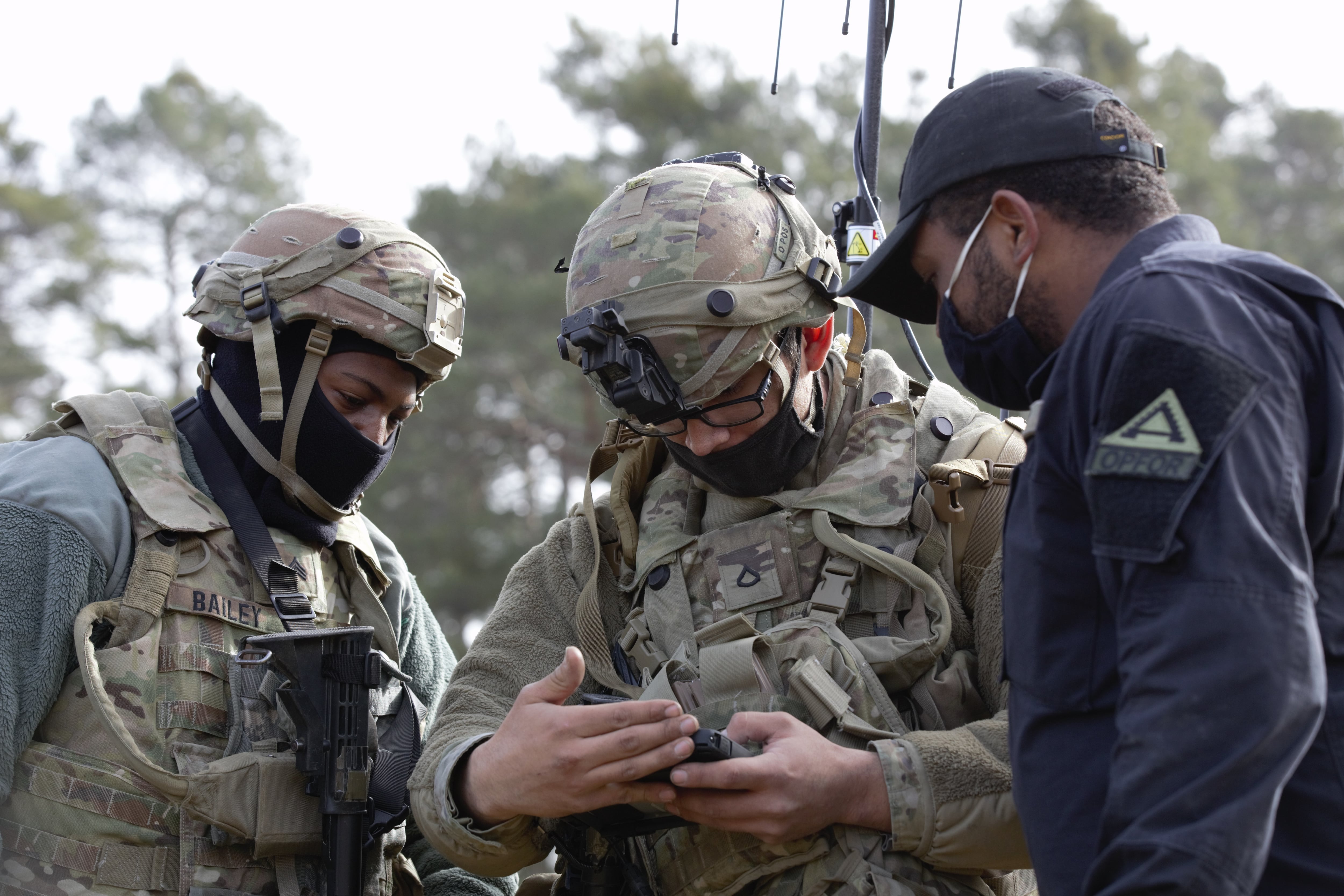WASHINGTON, D.C. ― Fighting in Ukraine and Gaza has taught Army leaders that units must shrink their battlefield headquarters to survive, and work drone and counter drone tactics at every level.
Secretary of the Army Christine Wormuth and Chief of Staff of the Army Gen. Randy George spoke with reporters Tuesday about Ukraine lessons and a range of topics at an event hosted by the George Washington Project for Media and National Security.
“There’s really no place to hide,” George said. “Nobody wants to be prominent on today’s battlefield. What being prominent will get you is it will get you killed.”
Wormuth echoed the general’s remarks, saying in a recent visit to Germany where she spoke with U.S. and Ukrainian troops training together at Grafenwoehr Training Area, the key takeaway was that units needed to stay mobile.
U.S. soldiers had cut what is typically a four-Stryker command post that includes large satellite dishes and full crews to a two-Stryker setup in which all communications and network equipment were housed in one vehicle.
RELATED

The entire command post could be set up or taken down in under 15 minutes, she said.
George noted similar work going on out at the National Training Center at Fort Irwin, California. A recent division headquarters conducted a rotation at the training center. The headquarters shrank its typically large footprint by 75% for the rotation.
“We’re done lugging around big satellite dishes, we’re done with server stacks, all of that’s got to change,” George said.
In recent years division headquarters often could run their operations during these exercises from an office building or back at home station, simulating much of the work. But to prepare for potential large-scale combat operations, the Army began sending division headquarters to the National Training Center for more realistic training scenarios.
Beyond shedding gear for a slimmer headquarters, those same units are having to “hide in plain sight,” George said.
That means using netting on vehicles, a widespread practice in the pre-Global War on Terror era, when units faced enemy air threats.
The netting also helps conceal electromagnetic signals that can give away a position, George said.
“They had to figure out how to command and control a very large organization,” George said. “They had to worry about UAS that were trying to find them and to kill them out there.”
Wormuth stressed a need for further investment in drone and counter drone capabilities across the Army.
“What we’ve seen in Ukraine is that we in the Army have got to do more, more, more on UAS and counter UAS in terms of investing in those systems,” Wormuth said.
Wormuth said drones are basically “flying IEDs” when targeting combat vehicles. The Army is pursuing directed energy and high-powered microwave prototypes for countering drone attacks on vehicles.
George said the Army plans to teach drone operation at every installation where the Army can operate small drones.
Army Times reported in November 2023 that the service would soon start including counter drone instruction in basic training, teaching brand new soldiers to be aware of the overhead threats.
The general pointed to the recent cancellation of the Army’s Raven and Shadow drone programs.
The Army’s inventory currently includes 19,000 Ravens and more than 575 Shadow drones, Defense News reported.
Both are aging platforms used extensively during counterinsurgency and counterterrorism wars over the past two decades. But they are not considered effective against current near-peer threats.
The Army plans to replace the Shadow drone with its Future Tactical UAS program. Brig. Gen. David Phillips, Army aviation program executive officer, told Defense News those prototypes should be in the operational force by fiscal year 2025.
What those drone changes will mean is more drones of several types at various unit levels.
The Shadow system, which includes four aircraft, two vehicle-mounted ground control stations, a generator and backup equipment takes more than two dozen soldiers to operate.
Plans will include repurposing those drone operators. One example George provided was to create a detachment at the brigade level with a longer distance, higher powered drone while having fewer exquisite capabilities at lower tactical levels.
Todd South has written about crime, courts, government and the military for multiple publications since 2004 and was named a 2014 Pulitzer finalist for a co-written project on witness intimidation. Todd is a Marine veteran of the Iraq War.








